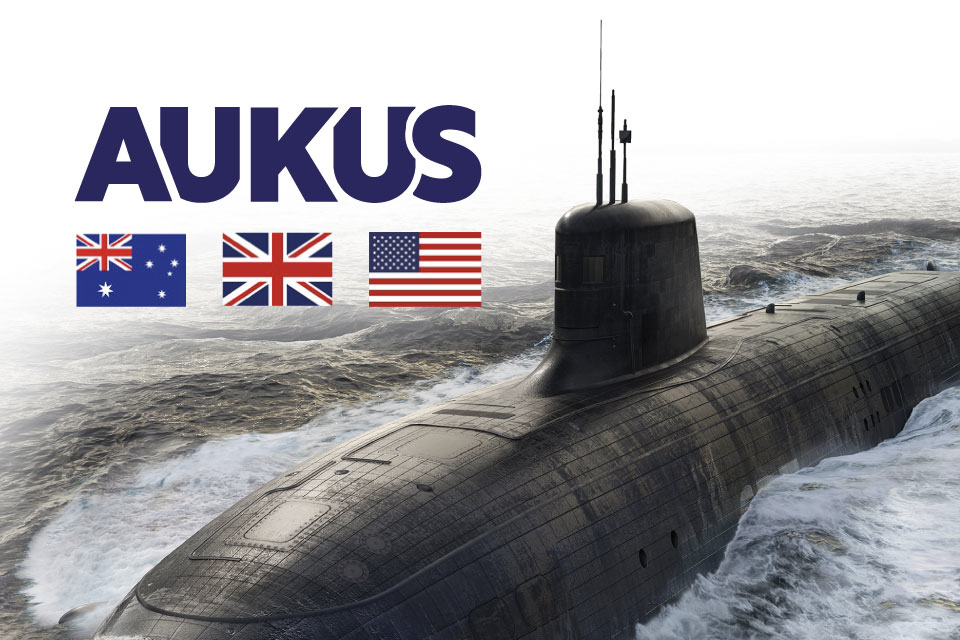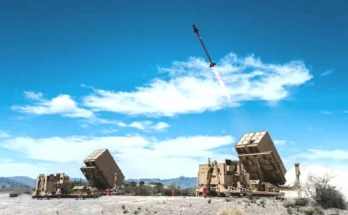Sea Air Space Panel Offers Updates on AUKUS Program

Since its announcement in September 2021, the Australia, United Kingdom, U.S., or AUKUS trilateral security pact has sparked interest and promised to redefine security in the Indo-Pacific. Not just a nuclear submarine deal, but a comprehensive tech-sharing and collaboration agreement worth billions, AUKUS is rapidly becoming a key component of the U.S. security architecture in the region. At Sea Air Space 2024, a panel moderated by Defense News’ Megan Eckstein offered an update on the status and future of the AUKUS agreement. Featuring U.K. Second Sea Lord Vice Adm. Martin Connell, Australian Minister for Defense Industry Pat Conroy, U.S. Vice Adm. Robert Gaucher and General Dynamics Mission Systems’ Vice President Dr. Laura Hooks, the panel explored the evolving security pact from the government, military and industry sides of the project.
Divided into two pillars, the first being the acquisition of conventionally armed, nuclear-powered submarines with an immediate eye to Australia, and the second being the development of advanced shared capabilities, AUKUS is an expansive and intricate arrangement involving a sizable number of moving parts. Beginning by exploring the structure of the agreement, the panel elaborated on the phases of the first of AUKUS’ two pillars, the “submarine deal”. Per Vice Adm. Gaucher, the first phase involves familiarizing Australian defense and industry personnel with nuclear submarines, upping the port calls and visitations of U.K. and U.S. submarines. By 2027, the two nuclear powers will establish a Submarine Rotational Force, deploying Virginia-class submarines to Australia’s Stirling Naval Base outside Perth. The second phase, aimed for 2032 onward will see the sale or lease of three Virginia-class submarines to Australia. The third and final phase, broadly slated for 2042, would see the first shared-design AUKUS-class submarine come online. Vice Adm. Connell stated that the design for that future submarine is already mature and expected to be formalized in the next year or two.
The panel shared confidence and excitement in AUKUS’ capacity to enhance mutual security and technological development. The Second Sea Lord highlighted that pre-AUKUS all three nations struggled with certain research and development work, operating their own projects despite having overlapping requirements. In the current environment, the member states have already seen expedited development and progress, now working together on a swath of shared cutting-edge endeavors. Such projects include artificial intelligence, autonomous systems and undersea and seabed warfare. Concurrent investment into infrastructure and facilities for both AUKUS pillars was another source of enthusiasm for the panelists. Min. Conroy mentioned plans to double the size of the Rolls Royce facility in Darby, U.K., which will manufacture the reactors for the Australian submarines.
The moderator also prodded the panel about some of the challenges facing the program, as submarine production has been short and the defense industry in the U.S. and U.K. has been stretched thin. Vice Adm. Connell presented a more optimistic view of the current defense industry capabilities. Rather than stretched thin, the submarine industrial base is prioritizing the completion of key advancement projects including the future Dreadnought class, he argued. Dr. Hooks affirmed that the industry has a clear understanding of the government’s needs and is expanding its capacity to deliver the next generation of defense technologies.
Each panelist was further asked a final question on the greatest challenge to implementing AUKUS’ Pillar 1. For Min. Conroy, it was Australia’s embracing of the nuclear culture, a new frontier for the nation. Vice Adm. Gaucher cited interoperability with Australian allies, preparing them for the major leap in capabilities nuclear submarines would offer. For Vice Adm. Connell, the largest challenge was the formation of a skilled workforce capable of handling the needs of the program. Finally, Dr. Hooks reflected on the challenge of maintaining the project’s momentum, both in government and in industry, and carrying that energy forward in the coming years.
Common themes in the trilateral update and other panels at Sea Air Space included the value of the U.S.-led global alliance network, and the confidence shared amongst partners in their capabilities to develop a favorable security environment in coming years. Leveraging the value of a competitive and capable defense industry, perhaps hoping to assuage fears of industry delays or capacity limitations, was another visible thread among panelists. The AUKUS agreement has become the centerpiece of an evolving U.S. global strategy that relies on deeper ties with allies in the Indo-Pacific and capitalizes on the need for modern capabilities at the precipice of an era of great technological change. With the emphasis on the strength of multilateral security, it is not inconceivable that AUKUS’ Pillar 2 could eventually see new members, such as Japan or Canada participating in technology sharing and collaboration. If the currently three-member body can capitalize on its advantages and overcome its challenges, it will be increasingly well-positioned both under the sea, and beyond.
Tom Freebairn is a weapons analyst with Military Periscope covering naval affairs and maritime systems. He pursued an undergraduate degree in International Relations and Modern History, followed by a master's in Middle East, Caucasus, and Central Asia Security Studies from the University of St. Andrews. His master's thesis focused on the relationship between oil and separatist politics in Northern Iraq. Tom's interests include the politics of energy, ethnic separatism, the evolution of naval warfare, and classical history.




